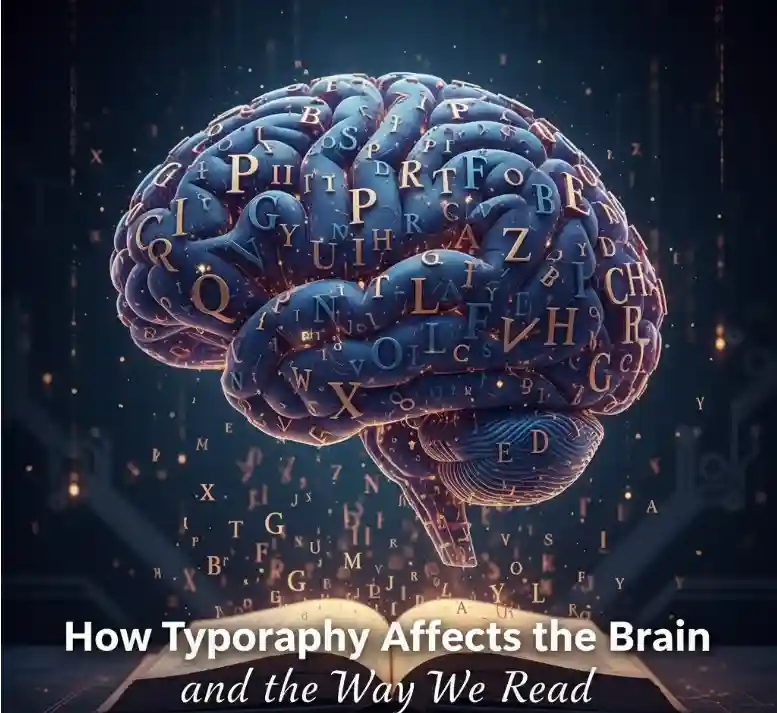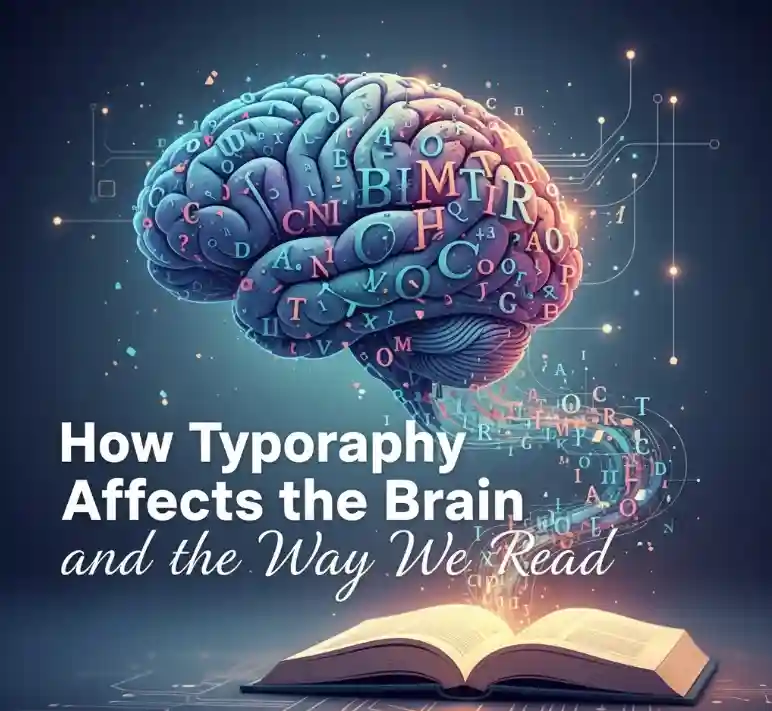Table of Contents
- Introduction
- The Science Behind Typography and the Brain
- How Fonts Influence Reading Speed and Focus
- The Emotional Impact of Typography
- Typography and Memory Retention
- Choosing the Right Font for Better Readability
- Examples of Fonts That Enhance Comprehension
- Final Thoughts
- References

1. Introduction
Typography is more than a visual choice—it’s a psychological language that speaks directly to the brain. From the headlines we scan on our phones to the books we read before bed, the design of the letters we see affects how we think, feel, and retain information.
As designers and font creators at RaisProject.com, we’ve observed how certain typefaces evoke trust, clarity, and even emotional warmth. Understanding how typography affects the brain can help you make smarter design choices that connect more deeply with your audience.
2. The Science Behind Typography and the Brain
Research in neuroscience and cognitive psychology shows that typography influences how efficiently our brains process text. According to studies from the University of Michigan and MIT, the brain doesn’t read letter by letter—it recognizes entire word shapes, a concept known as Bouma shape recognition.
When a font disrupts these shapes—through poor spacing or overly decorative features—it increases cognitive load, forcing the brain to work harder. Conversely, well-designed typefaces reduce mental effort, improving comprehension and reading flow.
3. How Fonts Influence Reading Speed and Focus
Readable typography enhances focus and prevents fatigue. Fonts with generous x-heights, balanced spacing, and consistent stroke widths help the eyes glide smoothly across text.
Sans-serif fonts like Helvetica or Open Sans are often praised for their clarity on screens. Similarly, at RaisProject, we design fonts that maintain a delicate balance between aesthetics and function.
When typography is difficult to read, readers spend more time decoding than understanding, which reduces focus and engagement. The right font can transform reading from a chore into an effortless experience.

4. The Emotional Impact of Typography
Typography doesn’t just affect how we read—it affects how we feel. The shape and personality of letters can evoke specific emotions, influencing perception and memory.
- Serif fonts express tradition, reliability, and authority.
- Sans-serif fonts convey modernity and simplicity.
- Script fonts trigger feelings of warmth, elegance, and creativity.
For example, if you’re building a brand with an elegant and human touch, fonts like CHEROL Serif Fonts or I Am Beautiful Font can create that emotional resonance.
5. Typography and Memory Retention
Typography also affects how well we remember what we read. Studies on the “disfluency effect” suggest that slightly challenging fonts can boost memory retention by making the brain engage more deeply.
However, there’s a fine line: fonts that are too decorative may cause frustration and distraction. Instead, choose fonts with distinct but balanced features, such as Jabbing Serif Display Fonts — strong, structured, yet readable. These typefaces engage the reader’s attention without compromising comprehension.
6. Choosing the Right Font for Better Readability
Here are some practical tips to choose fonts that help the brain read better:
- Match the font to the medium. Print materials benefit from serif fonts, while digital screens favor clean sans-serifs.
- Prioritize legibility. Avoid overly condensed or decorative fonts for long passages of text.
- Use contrast wisely. High contrast improves visibility and prevents visual strain.
- Test your typography. The same text rendered in different fonts can produce different emotional and cognitive effects.

7. Examples of Fonts That Enhance Comprehension
Here are some RaisProject fonts that combine cognitive readability with strong visual appeal:
- I Am Beautiful Font – A refined serif display font that blends elegance and legibility. Ideal for editorial layouts and luxury branding.
- CHEROL Serif Fonts – A sophisticated duo (serif + signature script) merging professionalism and personality. Perfect for brand identities that require trust and warmth.
- Jabbing Serif Display Fonts – A bold yet balanced serif family that guides the reader’s eye with precision. Excellent for titles, magazines, and packaging.
- Out Of Topic Font – A modern, masculine display font that maintains clean readability and strong character. Great for impactful headlines or branding.
- Artlist Font – A creative and geometric display font that enhances digital readability while maintaining artistic expression.
Each of these fonts demonstrates how good typography is not only visual but neurological—helping readers stay engaged and remember what they read.
8. Final Thoughts
Typography bridges the worlds of art, psychology, and neuroscience. Every font you choose sends subtle signals to your reader’s brain—shaping comprehension, focus, and emotion.
By understanding these principles, designers can use typography not just to beautify content, but to enhance communication.
At RaisProject.com, we craft typefaces that respect both aesthetics and the science of perception. Explore our growing library of handcrafted fonts to find the perfect typeface for your brand, message, or creative project.
9. References
- MIT Department of Brain and Cognitive Sciences. news.mit.edu
- Letterhend Studio Blog: The Neuroscience Behind Typography
